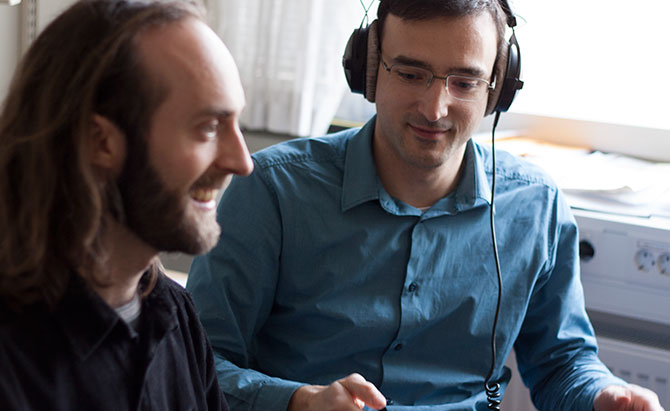Turn up the volume? A better way to broadcast over the noise
Environment
Loud, distorted and repetitive announcements are common in noisy public spaces like airports and train stations. But turning up the volume might not be the answer.

Traffic, aircraft, mobile devices and personal music equipment are not the only sources of noise pollution. Public address systems have become part of the escalating problem, which according to the World Health Organization, costs Europeans alone the equivalent of 654,000 years of healthy life annually.
But researchers at Stockholm’s KTH Royal Institute of Technology have developed a way to bring down the volume on loud public announcements while preserving their clarity in noisy environments.
“By manipulating speech before it is sent to the loudspeakers, we can enhance the speech signal and adapt it to the surrounding noise,” says Gustav Eje Henter, PhD student at Communication Theory at KTH. “This makes it possible to communicate at much lower volume levels than before.”
Earlier approaches to the problem focused on making the speech more prominent, while the KTH researchers are paying attention to what is actually said. They do this by working with computer and machine speech recognition, which is modeled on human hearing. By creating speech that is easier for computers to recognise, people should benefit as well, the researchers say.
“Our manipulation, which is suited for a computer speech recogniser, also makes it easier for people to hear the right thing,” says Petko Petkov, also a PhD student at Communication Theory. “The modified words sound more distinct from each other, making it easier to distinguish them in the noise.”
Petkov and Henter have developed their method together with Professor Bastiaan Kleijn as part of the European collaborative LISTA– or Listening Talker – project.
A recent global evaluation by the LISTA Consortium at University of Edinburgh showed significant increases in the number of words identified correctly in manipulated speech signals, over unaltered speech. The results of the LISTA evaluation are expected to be published later this year.
In some cases, the improvement in understanding is equivalent to turning down the speech volume by more than 5 decibels, which is similar to the difference in the strength between car and truck noise, while still being able to hear what is said just as clearly.
“This enables communication in conditions where speech normally would be impossible to understand,” says Henter.
The LISTA project is funded by the European Union's Future and Emerging Technology framework programme, and involves scientists from Spain, Greece, Sweden and the UK. The techniques developed within the project involve both natural and synthetic speech in different types of noise. In addition to public address systems, the project could benefit a wide range of devices that produce speech output – such as mobile phones, radios and in-car navigation systems.
For more information, contact Petko Petkov, petkov@kth.se or Gustav Eje Henter, gustav.henter@ee.kth.se.